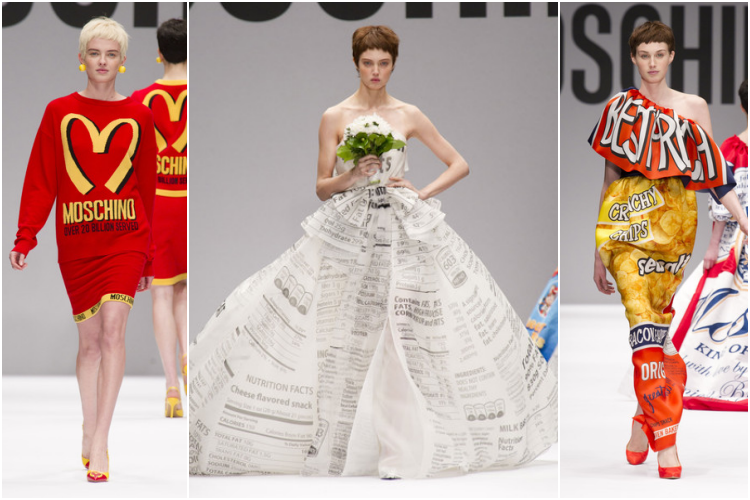The Met Gala 2019 will be held on 6 May. All kinds of celebrities will gather at the Metropolitan Museum of New York to attend the event of the year in terms of fashion.
The exhibition of 2018, with the theme of the relationship between religion and fashion, was the most visited of the Costume Institute and left some of the most spectacular styles in the history of the Gala. But what is this year’s theme, what will be on show and who are the hosts? Find out.
What will be the theme of the 2019 Met Gala?
The theme of the next issue is inspired by Susan Sontag’s 1964 essay “Notes on Camp”. With it, the author became an intellectual celebrity, but what is “Camp” applied to fashion?
Camp: exaggeration and artifice
Camp designs are exaggerated, artificial and overloaded. A good example? The famous coat created with stuffed dogs and presented by Jean-Charles de Castelbajac at the end of the 1980s. But you don’t have to go back 40 years to find examples of Camp’s artifice. The designs of Alessandro Michele, creative director of Gucci, are the first to spring to mind. Outlandish, colourful and with layers upon layers of the most heterogeneous garments. Such is the creative imagination of the designer, who will also be one of the hosts of the Gala this year. Alongside him, Lady Gaga, Harry Styles and Serena Williams will be accompanying Anna Wintour at the 2019 Met Gala.

Some of Alessandro Michele’s Camp designs for Gucci: Fall 2016 – Spring 2019 – Fall 2019 – Spring 2017.
Camp: a trip to the past
But Camp is not just exaggeration; designs inspired by earlier eras are also considered Camp. The Egyptian collection by Galliano for Dior in 2004 or the medieval dress-lamp by Moschino in 2016 are a Camp trip back in time.
Camp: irony and double meaning
Camp is aesthetics, it is theatricality and it is humour. Everything open to double entendre, irony and parody has a place in this style. Fashion that laughs at fashion. The designer who creates a T-shirt costing hundreds of dollars with the logo of the DHL company (Vetements) or the one who writes “little black dress” on a simple black dress (Virgil Abloh for Off-White) are Camp.
But if Alessandro Michele represents contemporary Camp ostentation, Jeremy Scott for Moschino is the perfect example of irony and theatricality taken to the max. Is there anything more Camp than a wedding dress printed with nutritional information labels?
The camp is living one of its best moments, and we felt it was very important for the cultural conversation to pay homage to an aesthetic that is sometimes labelled as an empty frivolity, but can actually be a very powerful and sophisticated political tool, especially for marginalised cultures.
This is how Andrew Bolton, curator of the Costume Institute, justified the choice of this year’s theme to the New York Times. And the truth is that the choice of theme is masterful. It was very difficult to maintain the level of expectation after last year’s theme (fashion and religion) had left one of the most eccentric red carpets, with Rihanna dressed as a papisa or Kate Bosworth playing a contemporary Virgin Mary, but it seems that they have succeeded. Will we see a Lady Gaga dressed in steaks again, what will she surprise us with?
The exhibition: “Camp: Notes on Fashion“
The exhibition, open from 9 May to 8 September 2019, will feature more than 170 pieces. Among them, women’s and men’s fashion but also sculptures and paintings. And as Susan Sontag said in her essay: “There is not only a vision camp […]. There are films, clothes, popular songs, novels, people, buildings camp”.
The exhibition will be divided into two parts. The first will cover the origin of the Camp and will explore the concept as a form of expression of the community queer. Pieces from the 17th century in Versailles and the royal courts of Louis XIV and Louis XV will be on display in this space. In addition to a vision of the figure of the dandy and the strange subcultures of Europe and America at the end of the 19th century and the beginning of the 20th.

Some of the designs that can be seen in the exhibition: Marjan Pejoski Fall 2000 – Virgil Abloh for Off-White Pre-fall 2018 – Bertrand Guyon for House of Schiaparelli Fall 2018 haute couture. Photo © Johnny Dufort
Presence of Camp paradigm signatures
The second will showcase designs by firms whose collections have at one time or another become the paradigm of the camp. Gucci, Moschino, Thom Browne, Karl Lagerfeld, Demna Gvsalia (at the helm of Vetements and Balenciaga), Marc Jacobs, Jean-Charles de Castelbajac, Elsa Schiaparelli and Miuccia Prada are some of the designers, of the 37 total, whose designs will be present at the show.
Fashion is the most overt and enduring conduit of camp aesthetics. Effectively illustrating Sontag’s notes on the subject, the exhibition will promote a creative and critical dialogue on the course and ever-changing impact of camp on fashion.
Andrew Bolton and Wendy Yu, curators of The Costume Institute, testified.
How will the guests at the Met Gala 2019 interpret lo Camp? We don’t know yet, but what we do know is that it will be extravagant, excessive and absurd and expectations are sky high.
Camp: Notes on Fashion will be at the Met Museum in New Yorkfrom 6 May to 8 September 2019.






